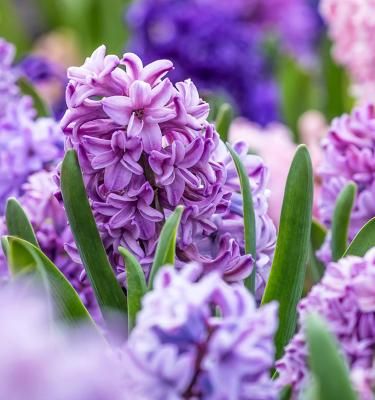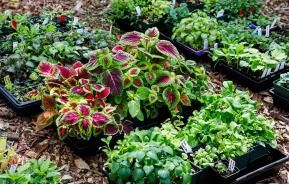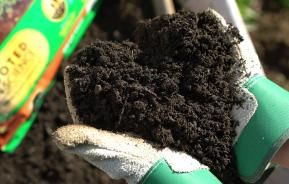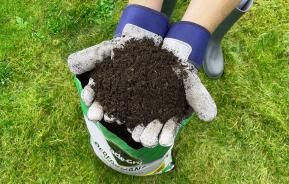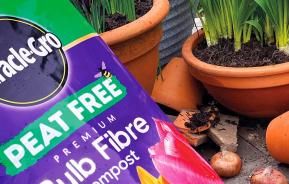Hyacinths are colourful spring-flowering garden plants with delightfully scented flowers. They are also commonly grown indoors in containers, producing delightful winter and early spring displays on windowsills, table tops and anywhere else their colourful, fragrant flowers can be enjoyed.
How to grow hyacinths
Hyacinths growing conditions
Hyacinths prefer sunny positions, although they will tolerate light shade. They will grow in just about any good soil, providing it has been improved with bulky organic matter, such as compost, and is reasonably well drained and doesn't become waterlogged in winter.
When to plant hyacinth bulbs
Be careful when handling the bulbs, as the dust from their skins can cause skin irritation. It may be worth wearing gloves.
How to grow outdoor hyacinths
Hyacinth bulbs are planted in autumn - the best time is September or October.
Plant bulbs 10-12.5cm (4-5in) deep, 15-20cm (6-8in) apart. For the most colourful displays, don't plant bulbs individually, but plant in bold clumps of the same variety..
If you miss out on planting bulbs in autumn, most garden centres sell potted bulbs – including those for indoor winter displays. These are useful for filling gaps in beds and borders or for instant colour in containers.
How to grow indoor hyacinths
For winter displays indoors, you have to buy specially prepared hyacinth bulbs, and plant them in pots in late summer or early autumn. They then need up to 10 weeks in cold, but frost-free (preferably 4-5°C/40-42°F), dark conditions to produce their flower buds and flower properly.

Suggested planting locations and garden types
Flower borders and beds, patios, containers, city and courtyard gardens, cottage and informal gardens, indoors, temporary houseplant.
How to care for hyacinths
Hyacinths are generally easy to look after. The bulbs can be left in the ground from year to year, or they can be lifted after flowering and after the foliage has died down. Store them in dry compost in a cool, dry place until it's time to replant them in autumn.
When they finish flowering, the bulbs start to build up their strength and produce their flower buds for the following year. This is the most important time of year and when the plants need some care and attention.
Start by deadheading as soon as the flowers have faded. You can either carefully pull or cut off the faded flower, plus the developing seed pod behind the flower, but allow the leaves to die down naturally. Don’t be tempted to remove the foliage before it has turned brown, as the bulbs need the leaves to feed them.
For the best hyacinth care, you can build up their strength further by giving them a liquid feed every 10 to 14 days while they’re still in leaf.
Indoor hyacinths
When the bulbs are in their cold, dark conditions, check regularly for signs of leaf growth. When this is 2.5-5cm (1-2in) long, bring them into a light, but not bright, cool room – around 10C (50F) – for a few weeks until the flower buds can be seen. They can then be moved to their flowering positions.
Prepared bulbs can't be used for indoor displays the following year, but they can be planted in the garden after first hardening them off once the foliage has died down.
Hyacinth pests
Hyacinths may also be susceptible to the following pests and diseases: Eelworms, Narcissus fly, Bulb rot.
| Flowering season(s) | Spring, Winter |
|---|---|
| Foliage season(s) | Spring, Winter |
| Sunlight | Partial shade, Full sun |
| Soil type | Chalky, Clay, Loamy, Sandy |
| Soil pH | Neutral |
| Soil moisture | Moist but well-drained |
| Ultimate height | 25cm (10in) |
| Ultimate spread | Up to 15cm (6in) |
| Time to ultimate height | 6 months |
